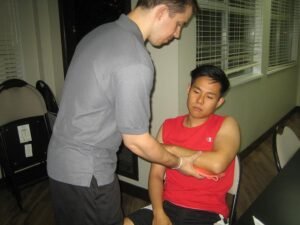A splint is best described as a device that is utilized to support a body part so that it will be stable in order to prevent further injury as well as minimize the pain. The main purpose of a splint is to immobilize while at the same time protect the damaged body part from further harm until medical care is provided. Do not forget to check for good circulation after the injured part has been immobilized.
Today, there are commercial splints that are utilized to immobilize an affected body part as part of the treatment for certain injuries and disorders. Splints can be used in different injuries especially in cases where there is a broken bone. Understandably, the main objective is to stabilize the area.
First aid requiring a splint

Initially, you have to provide the appropriate first aid measures if there are wounds present before applying a splint.
- The injured body part must be splinted in the position it was found, unless the individual has been treated by a health care professional.
- Look for an item that can be used as the support to make the splint such as boards, sticks or even rolled up newspapers. Even rolled up clothing or blanket can be used. The injured part can be taped to the unaffected body part in order to prevent it from moving.
- The splint must be extended beyond the injured area in order to prevent it from moving. Generally, you have to include the joint above and below the injured part in the splint.
- When securing the splint, you can use belts, strips of cloth, necktie or even tape above and below the affected part. Do not overly tighten since it can cut off the circulation.
- Do not forget to inspect the affected part regularly for paleness, swelling or numbness. If needed, you have to loosen the splint.
Tips to remember when it comes to splints
As much as possible, avoid changing the position or realign the affected body part. You have to be careful when you place a splint in order to avoid aggravating the injury. Make sure that you will pad the splint properly to prevent extra pressure on the affected limb. In case the injury is still painful after the splint is applied, remove the splint and seek medical assistance right away.
When to seek medical care
In case an injury occurs while out in the wilderness, call for emergency assistance right away. While waiting for the medical team to arrive, you have to provide basic first aid to the individual. If the following are present, seek medical help immediately:
- Open wound around the site of injury
- Bone has pierced through the skin
- Loss of pulse or there is a warm sensation surrounding the injured site
- Loss of sensation
Once these are present and medical assistance is not yet available while the damaged part appears bent in an abnormal way, gently replacing the damaged part into its normal position can help improve the circulation.
Prevention
The best way to prevent injuries requiring a splint is to observe safety at all times. There are some diseases that will make the bones prone to breakage, thus it is best to be careful when helping out an individual, especially the elderly. It is also best to avoid activities that will strain the bones or muscles for extended periods since these can result to fatigue and even falls. Make sure that protective gears are used all the time such as helmets, footwear, braces and pads.
